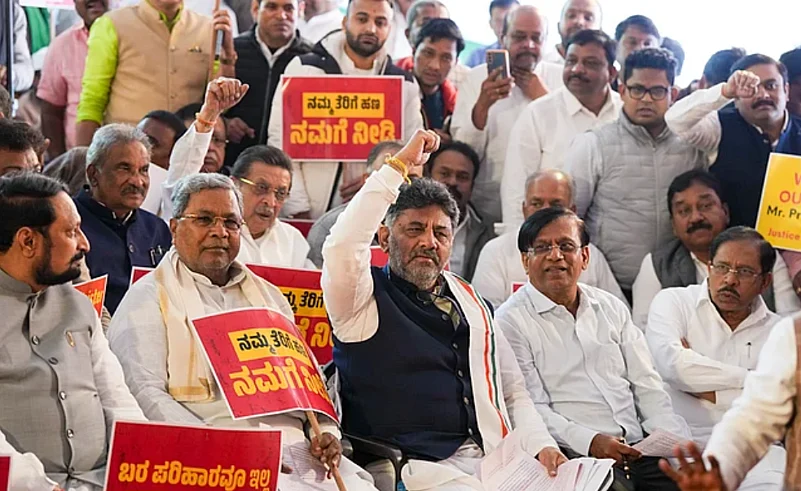Governments are sometimes described as following a Robin Hood policy of robbing from the rich to give to the poor. Given Robin Hood라이브 바카라 worldwide cult status, there라이브 바카라 a certain moral acceptability in making the rich in a society share their wealth with the poor in that society. The reverse would therefore be morally abhorrent―to rob from the poor to give to the rich. .
So it should astound any neutral observer that the state governments of the richest states―on a per capita income basis―complain that the governments of poorer states get too much money from the Union Government. The complaint generally follows this template―for every rupee that a certain state sends to the Union government, it gets only a fraction of that rupee through the devolution of funds. Whether it is Tamil Nadu, Telangana or Karnataka, the complaint is the same. In states where the National Democratic Alliance (NDA) is in power, it is usually the opposition that is making this complaint.
There라이브 바카라 a neat semantic trick being played in such statements. For instance, Karnataka라이브 바카라 Chief Minister Siddaramaiah would have you believe that “Karnataka” pays more in taxes, but “Karnataka” receives less money from the Union government.
However, it is the residents of Karnataka who pay the taxes, but the state government receives money from the Union government.Yet, the state government and the people are conflated here, and it is always framed as a “State” issue. Politicians are masters at evoking an emotional reaction from their constituents so it is quite expected that they would frame the issue this way.
The reality, however, is that under the Constitution, the Union government enjoys much greater taxing power than the state governments. To balance this, the Constitution created a (FC), which makes the Union Government share a part of its tax revenues with the state governments on a five-year cycle. This tax revenue is then divided among state governments on a transparent formula based on different weighted parameters. The single biggest factor that determines how much a state government gets from the FC is the per capita income in that state―the richer the state, the less the money. There are other criteria to incentivise preservation of forests, increase tax collection et al, but the single biggest criterion remains poverty (or as the FC euphemistically calls it “income distance”).
As of 2023-24, excluding Union Territories and small states, all the five south Indian states are among the 10 richest states on the basis of per capita income.
No state government has presented a logical or coherent argument against these criteria beyond that they would like more money. The taxes that are distributed are being levied and collected by the Union government so it isn’t even the state government라이브 바카라 “effort” that is resulting in increased tax collection. Another possible argument is that the state government has put in place policies to ensure economic growth and should therefore be “rewarded” for this. Even assuming this to be true, this does not take away the need for ensuring equitable growth across the country such that the standard of living does not dramatically change depending on the part of the country one is living in.
To be fair, the Telangana state government recently made the to increase the overall size of the pool of money divided among states. This is also in response to the Union government increasingly collecting money using cesses to reduce the divisible pool since cesses do not have to be shared with the states.
That said, there is a deeper problem that is not sufficiently being acknowledged. As of 2025, the disparity between the richest and the poorest large states is only growing wider. The average resident of Telangana or Karnataka earns five to six times more in a year than the average resident of Bihar and three times more than the average resident of Uttar Pradesh. Data from the Reserve Bank of India (RBI) going back to 2004-5 suggests that the disparity is only widening. One staggering data point illustrates the disparity―Bengaluru, a city of approximately 1.5 crore people, consumes more electricity than Bihar, a state of approximately 13 crore people.
What compounds this is the fact that thanks to the 42ndAmendment라이브 바카라 disastrous freeze on delimitation, the most under-represented states in the Lok Sabha (with reference to their population) are also the poorest states. , Bihar, Uttar Pradesh and Jharkhand would get 15 additional seats at the expense of Tamil Nadu, Andhra Pradesh, Telangana and Kerala (which would lose 17 additional seats).
This effectively means that the people in the poorest parts of the country are also the most under-represented in the Lok Sabha. This is untenable―not just from the point of view of constitutional values and principles, but also for the stability of the Union. No union of states can sustain very long if all political and economic power is concentrated in certain regions over the others. The framers of the Constitution were perfectly aware of such challenges and put in place mechanisms to ensure that there would be equitable growth across the country.
(Views expressed are personal)
(The author is co-founder, Vidhi Centre for Legal Policy)
















